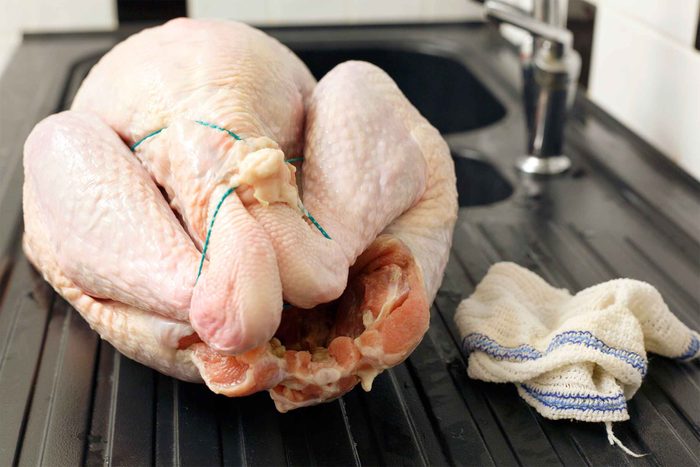
Myth: Always wash the turkey thoroughly
Experts say scrubbing down your bird is not only unnecessary, it could actually be harmful. You could splash disease-causing germs around your sink, countertop, utensils, and other food you may be preparing. The United States Department of Agriculture says it’s “virtually impossible” to wash bacteria off a raw turkey; instead, the group advises cooks to wash their hands for 20 seconds after handling it. (Here are the signs of food poisoning everyone should know.)
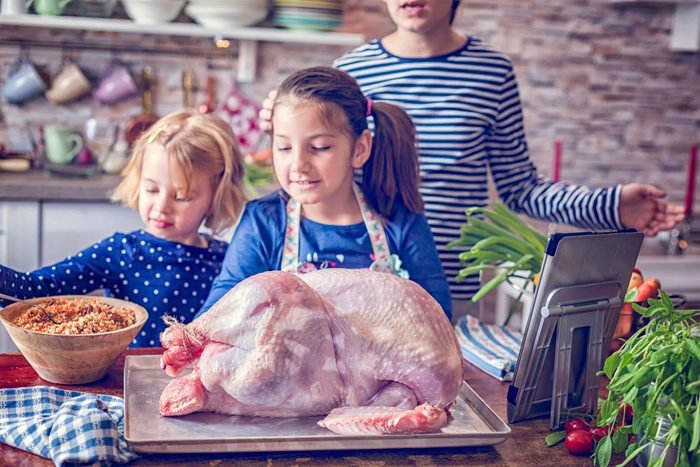
Myth: You don’t have to thaw a turkey completely
Actually, a properly thawed turkey is key to making sure the bird is fully cooked; one that’s partially frozen when it goes in the oven means the outside will cook but the inside will remain raw, warns the USDA. Butterball advises you place the unopened turkey breast-side up on a tray in the fridge and allow 24 hours of thawing for every four pounds of turkey. Never try to cook a frozen turkey overnight at a low temperature in the hopes of keeping it tender and moist; low and long is exactly what harmful bacteria needs to thrive. The USDA recommends setting your oven no lower than 325 degrees to decrease the risk of bacteria growth. (Find out if turkey makes you sleepy, or if something else is to blame.)
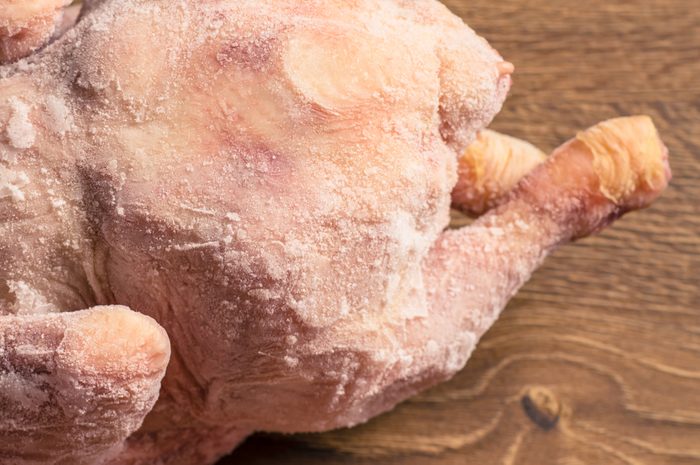
Myth: Never cook a frozen turkey
Partially frozen? Bad. Totally frozen? Sure, says the USDA. (Just don’t plan to deep fry it; it could explode).
The USDA recommends cooking a frozen stuffed bird for 50 percent longer than you would a thawed turkey of the same size. Don’t forget to remove the giblets when the turkey is cooked enough to reach them. Check out these hilarious real calls to the Butterball hotline.
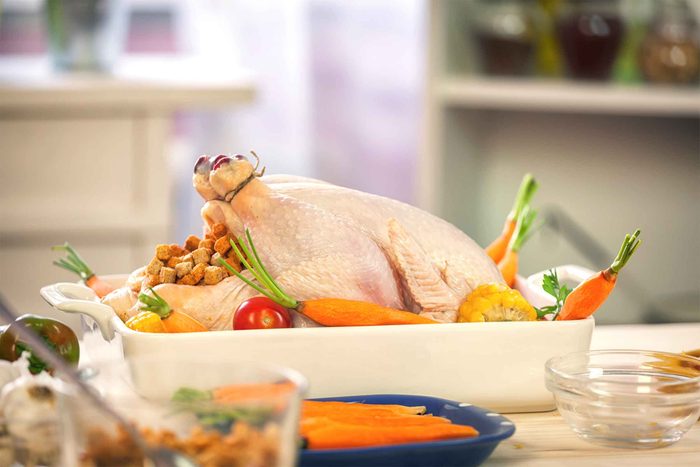
Myth: A stuffed turkey won’t cook through
Don’t fall for grandma’s warning that roasting the stuffing in the bird will give the whole family food poisoning. Forbes.com says you can reduce the risk by heating the dressing up to at least 130 degrees before placing it in the turkey. Also, check the temperature of both the stuffing and turkey meat before serving. Stuffing should be about 165 degrees, whether it’s cooked inside the bird or separately, according to FoodSafety.gov.

Myth: Basting frequently keeps meat moist
Some chefs swear basting is flavor-enhancing, others say it’s a waste of time. For a less hectic cooking schedule, you can skip the basting, say the experts at Cooks Illustrated, who did a study on basting. The concept is that basting slows the cooking process thus allowing the meat to retain juices and stay moist. In the study, basting did slow down cooking but there were no discernible differences between basting and non-basting. (However, the basted turkey was more evenly browned.) Don’t miss these other tricks for keeping your sanity during the holidays.
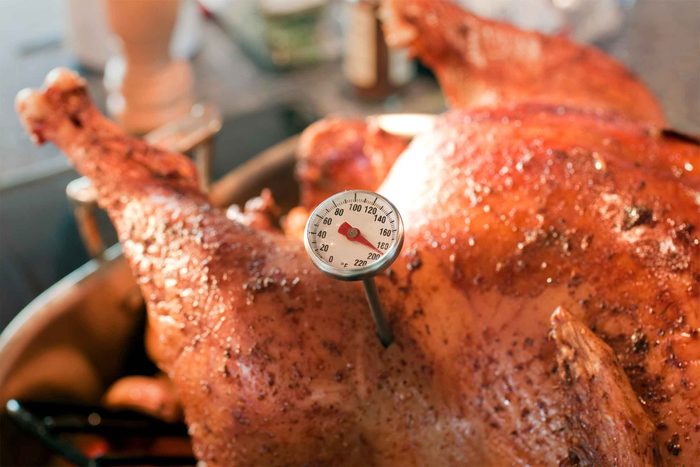
Myth: You can tell the bird is done by its thigh temperature
If the thigh is 165 degrees and juices run clear, is the bird is finished roasting? The USDA food-safety experts recommend testing at the thickest parts of the wings and breasts as well to check for doneness. The bird isn’t cooked enough until it registers 165 degrees at each of those spots. Butterball advises waiting until the thighs reach 180 degrees and breast is at 170.
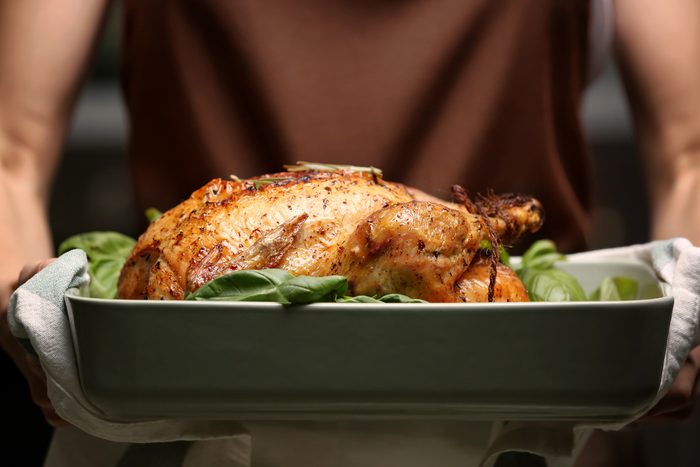
Myth: You can rely on a pop-up thermometer
Thermometers that pop up when the turkey is cooked may make you feel good about your bird, but most pros dislike the devices because they’re usually an indicator that the bird is overcooked. They’re usually programmed to pop up around 180°F, even though the USDA recommends cooking turkeys to a considerably lower 165°F minimum. But safety is the bigger issue. Consumer Reports tested pop-up monitors in 2014 and discovered that some popped before the meat was fully cooked. Even if you do want to let a pop-up thermometer guide you, the USDA suggests still checking the temperature at the innermost part of the thigh and thickest part of the breast. Make sure you know these 10 Thanksgiving cooking hacks that use items you already own.
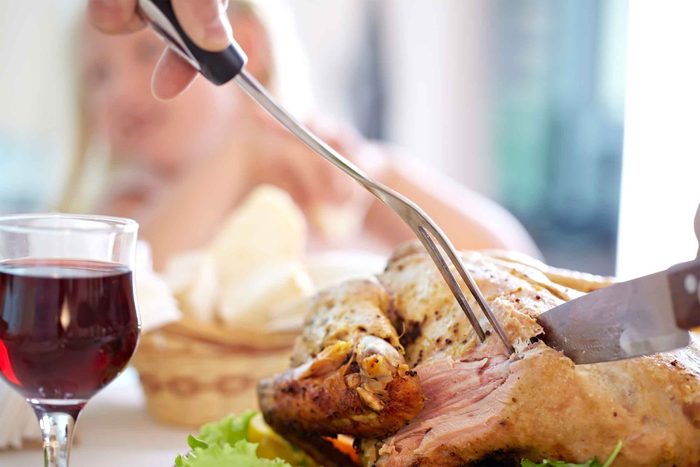
Myth: Don’t eat the skin
Turkey skin is high in fat—the skin on a 3.5-ounce piece has about four grams of fat, and is between 30 and 40 calories—but it’s the good kind of fat. There is more monounsaturated fat than saturated fat in poultry skin, according to nutrition experts at the Harvard School of Public Health. Monounsaturated fats help balance cholesterol levels, and it may improve insulin and blood sugar levels. Don’t make it your main meal, but feel free to enjoy a portion. Here are the best and worst Thanksgiving foods for your waistline.
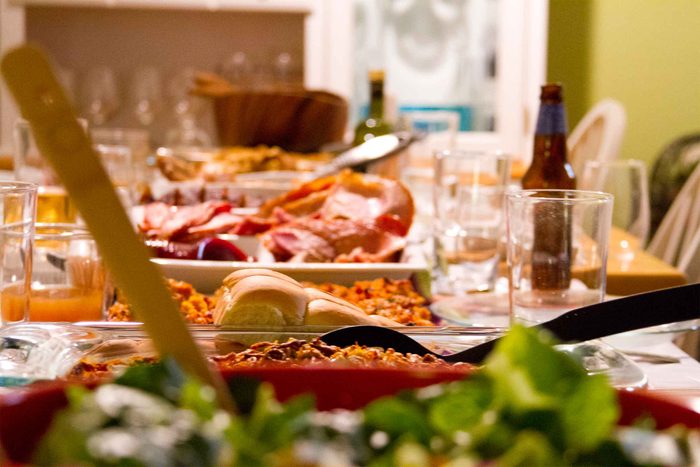
Myth: Leftovers can sit out until the end of the meal
Harmful bacteria can grow quickly, especially if your dining room temperature is warm. Butterball suggests refrigerating leftovers within two hours of eating, and then either eat them or freeze them within three days. Spruce up your menu with these tasty recipes for the ultimate Thanksgiving.
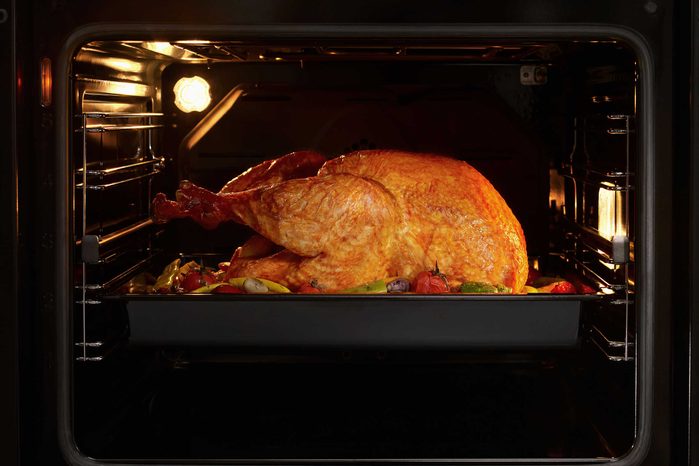
Myth: Get the turkey in the oven first thing in the morning
You don’t want everyone’s stomachs rumbling while they wait for the turkey, but depending on what time you plan to gather around the table, you might not need to rush to start cooking. Depending on the size of the bird, it will need to cook for about three to five hours at 325°F. Plan your day accordingly. When it’s finally time to sit down at the table, here’s why you should avoid commenting on weight or eating habits.